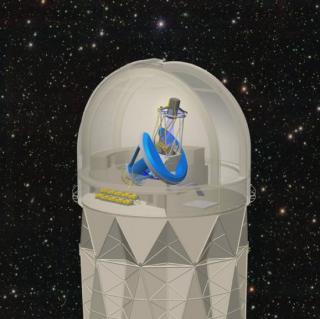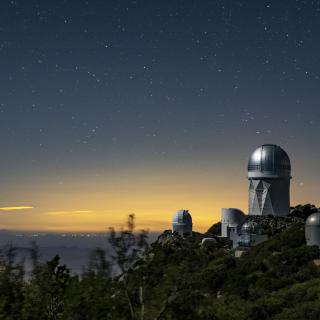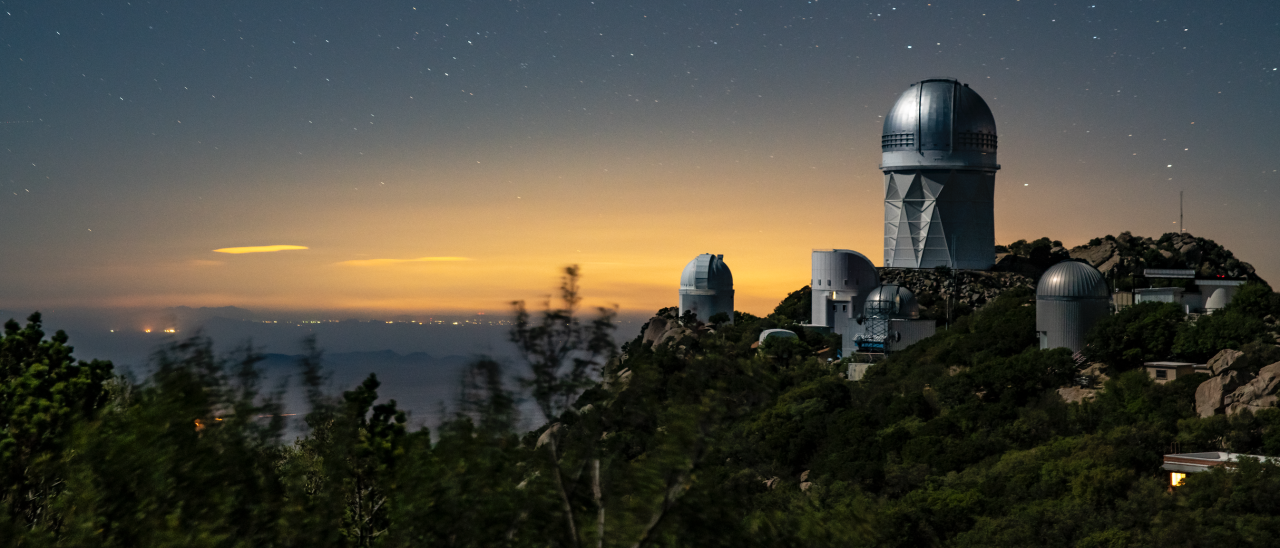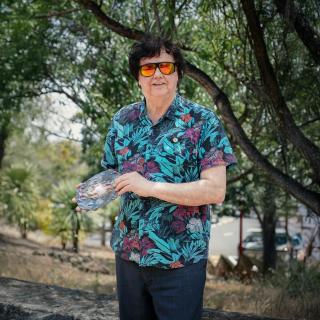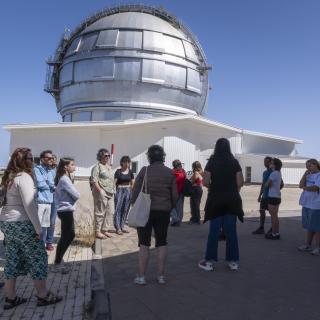The first batch of data from the Dark Energy Spectroscopic Instrument is now available for researchers to mine. Taken during the experiment’s “survey validation” phase, the data include distant galaxies and quasars as well as Milky Way stars.
The universe is big, and it’s getting bigger. To study dark energy, the mysterious force behind the accelerating expansion of our universe, scientists are using the Dark Energy Spectroscopic Instrument (DESI) to map more than 40 million galaxies, quasars, and stars. Today, the collaboration, which includes the Instituto de Astrofísica de Canarias (IAC), publicly released its first batch of data, with nearly 2 million objects for researchers to explore.
The 80-terabyte data set comes from 2,480 exposures taken over six months during the experiment’s “survey validation” phase in 2020 and 2021. In this period between turning the instrument on and beginning the official science run, researchers made sure their plan for using the telescope would meet their science goals – for example, by checking how long it took to observe galaxies of different brightness, and by validating the selection of targets to observe.
“The fact that DESI works so well, and that the amount of science-grade data it took during survey validation is comparable to previous completed sky surveys, is a monumental achievement,” said Nathalie Palanque-Delabrouille, co-spokesperson for DESI and a scientist at the Department of Energy’s Lawrence Berkeley National Laboratory (Berkeley Lab), which manages the experiment.
DESI uses 5,000 robotic positioners to move optical fibers that capture light from astronomical objects. It is the most powerful multi-object survey spectrograph in the world, able to measure light from more than 100,000 galaxies in one night. That light tells researchers how far away a galaxy is, building a 3D cosmic map.
Part of DESI’s survey validation included the “One-Percent Survey” visualized in this flythrough. Researchers took detailed images in 20 different directions on the sky, creating a 3D map of 700,000 objects and covering roughly 1% of the total volume DESI will study. With the instrument and survey plan successfully tested, the main DESI survey is now filling in the gaps between those observations. Credit: David Kirkby/DESI collaboration.
The IAC has two teams participating in DESI. One of them, led by Francisco-Shu Kitaura with Ana Almeida, Andrés Balaguera-Antolínez, Aurelio Carnero, Ginevra Favole, and Francesco Sinigaglia, focuses on Cosmology. ¨The distribution of galaxies traced by the DESI instrument will shed light on how the largest structures formed in the Universe. These can be used to study the origin and basic constituents of the cosmos¨, explains Kitaura.
The second IAC team, led by Carlos Allende Prieto with David Aguado, Jonay González-Hernández, Rafael Rebolo y Guillaume Thomas, is using the DESI observations of stars to study the formation and evolution of our own galaxy, the Milky Way. “We are particularly interested in the first stars formed in the universe” says Allende Prieto, who explains that they have also used Gran Telescopio Canarias “to check agreement between the data from the two scientific facilities”.
DESI uses 5,000 fiber-optic “eyes” to rapidly collect light from distant galaxies. In good observing conditions, the experiment can image a new set of 5,000 objects every 20 minutes. Credit: Marilyn Sargent/Berkeley Lab.
The DESI early data release is now available to access for free through the National Energy Research Scientific Computing Center (NERSC). A video showing how DESI works is available on the internet and will be displayed this summer at the Museum of Science and the Cosmos, next to the IAC in Tenerife.
DESI is supported by the DOE Office of Science and by the National Energy Research Scientific Computing Center, a DOE Office of Science user facility. Additional support for DESI is provided by the U.S. National Science Foundation, the Science and Technologies Facilities Council of the United Kingdom, the Gordon and Betty Moore Foundation, the Heising-Simons Foundation, the French Alternative Energies and Atomic Energy Commission (CEA), the National Council of Science and Technology of Mexico, the Ministry of Science and Innovation of Spain, and by the DESI member institutions.
Kitt Peak National Observatory is a program of NSF’s NOIRLab. The DESI collaboration is honored to be permitted to conduct scientific research on Iolkam Du’ag (Kitt Peak), a mountain with particular significance to the Tohono O’odham Nation.
